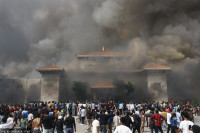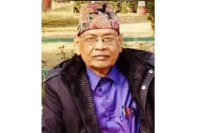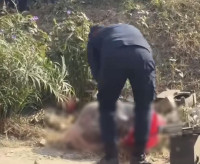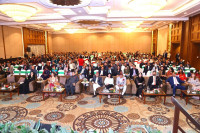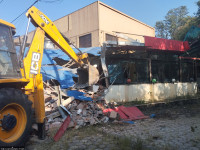Valley
Gas explosion exposes lack of safety measures in Kathmandu’s restaurants
Four of the 11 injured in Kamalpokhari gas explosion earlier this month have lost their lives. Due to lax regulation, the city’s eateries have turned into ‘ticking time bombs’.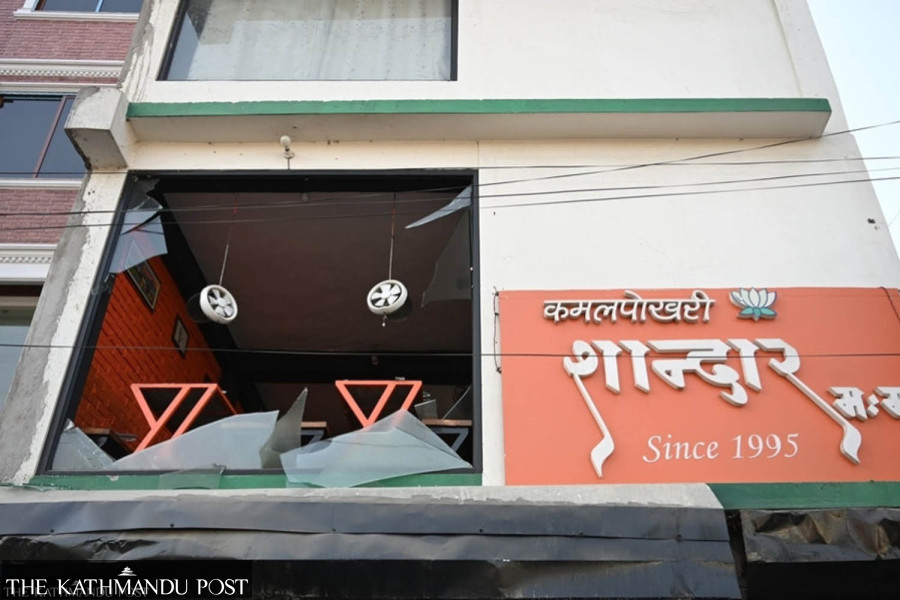
Post Report
On February 6, the Kamalpokhari-based Shandar Momo joint caught fire after a gas leak, injuring at least 11. The injured were admitted to the Kirtipur Burn Hospital; four of them have lost their lives. The rest of the seven are still undergoing treatment at the hospital, according to Superintendent of Police Apilraj Bohora, spokesperson for the District Police Range, Kathmandu.
Police have identified the deceased as Tshiring Lama, 25, from Dhunkharka in Bethanchowk Rural Municipality, Kavrepalanchok; Pradeep Tamang, 22, of Udayapurgadhi-7, Udayapur; Rabin Rai, 18, of Dillipur, Manahari Rural Municipality-5, Makawanpur; and Bhim Bahadur Ghale Magar, 25, of Katari Municipality-8, Galtar, Udayapur.
The accident occurred when an empty LPG cylinder, which was close to the operating gas stove, leaked the gas to ignite the fire, according to police. “Lack of precautions seems to be the major reason behind the incident,” Bohora said.
The incident at Shandar Momo is just one representative incident. Many roadside restaurants and eateries in Kathmandu haven’t taken adequate precautions, turning them into ticking time bombs, Bohora said. Fire extinguishers in those restaurants and eateries are an exception, not the norm. Cooking gas cylinders and stoves are often placed just besides the entrances of the eateries, further heightening the risk.
Shankar Bhandari, general secretary of Hotel Professional Federation Nepal, admits that most restaurants and eateries operating in Kathmandu lack adequate safety measures.
He explained that the problem persists despite the fact the federation conducts safety training and orientation programmes frequently.
“It is high time the authorities concerned pay attention to this,” Bhandari said. “Restaurants that use high-pressure gas stoves and burners must take adequate safety measures.”
In some cases, even the minimum standards required to operate a restaurant are not followed, Bhandari added.
According to the National statistics Department survey released a month ago, there are altogether 142,223 food and accommodation centres from bigger chain hotels to smaller eateries operating across the country. Hotel Professional Federation Nepal estimates that as many as 15,000 restaurants and eateries are operating in the Kathmandu Valley.
The restaurants and eateries come under the local governments, which have to monitor whether safety standards are being followed. After registration at the local unit, the Internal Revenue Office issues a PAN certificate, allowing permit to operate the business. The office should also investigate to what extent security standards have been adopted before issuing the PAN certificate. In some places, the security measures are followed, but the problem is that they are not effective.
“The problem arises when government agencies prioritise revenue collection over safety standards,” one of the restaurant owners said.
The Department of Agriculture and Livestock under the Kathmandu Metropolitan City (KMC) has the mandate to monitor the hotels and restaurants operating in the city. Although they were not guaranteed that right before, they have gradually started exercising it now, according to Nur Nidhi Neupane, the department head.
“However, we are still not in the position to give instructions on details such as the placement of gas cylinders and the layout of the kitchens and other related aspects due to the absence of the law,” Neupane said. “Based on the authority granted to us, we have been monitoring the extent to which the restaurants and eateries operating in the KMC have adhered to safety standards.”




 8.12°C Kathmandu
8.12°C Kathmandu